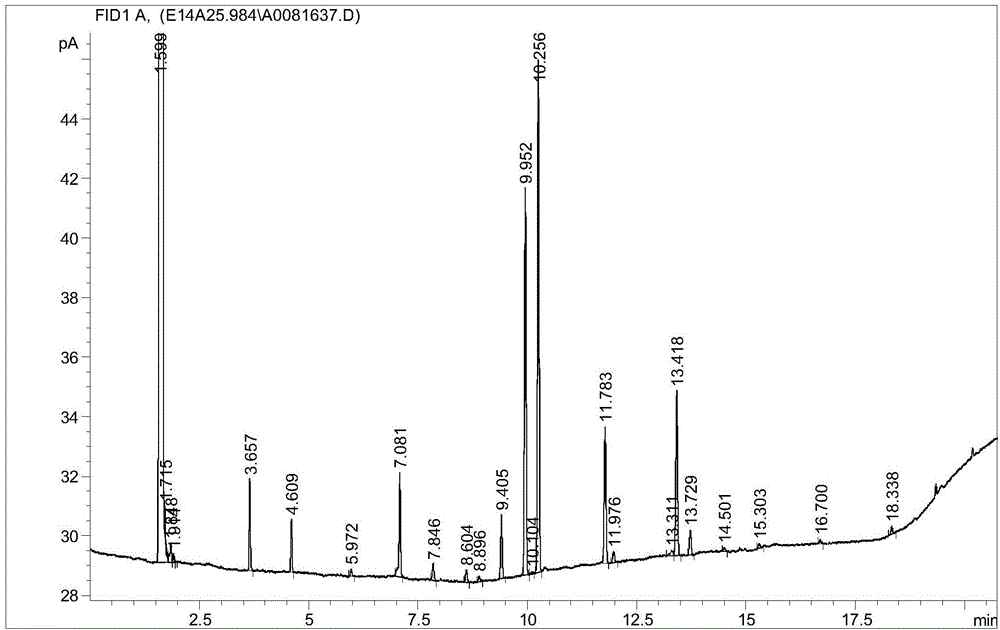Tolerant serratia grimesii for enriching heavy metals and application of serratia grimesii
A technology of Serratia griseri and heavy metals, which is applied in the direction of bacteria, chemical instruments and methods, and methods based on microorganisms, can solve the problems of application and resistance mechanism that need to be deepened, and research is not mature enough to achieve strong adaptability and growth Fast, versatile effects
- Summary
- Abstract
- Description
- Claims
- Application Information
AI Technical Summary
Problems solved by technology
Method used
Image
Examples
Embodiment 1
[0026] Embodiment 1: Screening of Serratia bacterium DJ16
[0027] Isolation of the original strain of Serratia bacterium DJ16: Take a sample from the soil of the sewage treatment plant, weigh 1.0g of the sample and add it to a test tube filled with 9mL of sterile water, shake it on a vortex for 10 minutes to fully disperse the soil particles, Then stand still for 5min, and adopt 10-fold gradient dilution method to make the supernatant into 10 -2 、10 -3、10 -4 、10 -5 The dilutions were coated on LB plates respectively (adding a certain amount of Cd 2+ , selection separation), and placed upside down in a 28°C incubator for 7 days. According to the different morphological characteristics of the colony, pick a single colony from the plate and inoculate it on the corresponding slant medium. If there are non-pure cultured strains, use an inoculation loop to pick a little lawn and streak on the plate for separation.
[0028] Mutagenesis of the original strain of Serratia bacter...
Embodiment 2
[0029] Embodiment 2: Serratia bacterium DJ16 (preservation number: CCTCC M 2014578), Biolog (GN2 / GP2) automatic identification analysis
[0030] Pick the bacterial lawn of the strain to be tested and inoculate it on a Biolog plate, and cultivate it to the logarithmic growth phase at 28°C. Dip the Biolog IF liquid with a sterilized cotton swab, scrape off the bacterial lawn on the plate, then dissolve it in the Biolog IF liquid, shake and mix well; use a Biolog turbidimeter to adjust the turbidity to the specified range (GP plate: 28% ± 3% , GN plate: 52% ± 3%); then use a pipette gun to add the bacterial suspension to the Biolog identification plate, 150 μL per hole; then take out the identification plate when it is incubated at 28°C for 16-24 hours, and use the Biolog MicroStation analyzer to test the identification plate Perform data reading and analysis.
[0031] Table 1: Biolog (GN2 / GP2) automatic identification results
[0032]
[0033]
[0034]
[0035]
[...
Embodiment 3
[0037] Embodiment 3: Bacteria DJ16 (preservation number: CCTCC M 2014578) 16S rRNA gene sequence analysis
[0038] (1) Extraction of chromosomal DNA (small amount):
[0039] 1. Take 1.5mL bacterial liquid in a 1.5mL Eppendorf tube and centrifuge at 12 000r / min for 5min.
[0040] 2. Discard the supernatant, resuspend the pellet in 900 μL phosphate buffered solution (PBS), and centrifuge at 12 000 r / min at 4°C for 5 min.
[0041] 3. Discard the supernatant, add 300TE and 200μL 10mg / mL lysozyme, blow and aspirate to mix, incubate at 37°C for 1h, and mix by inverting every 15min.
[0042] 4. Add 600TENS lysate (200mmol / L NaCl, 100mmol / L Tril-HCl pH8.0, 2.0% SDS, 50mmol / L EDTA, 0.5% Triton X-100) and 20mg / mL proteinase K 10μL to the precipitate, mix by inverting, Incubate at 55°C for 1 hour, and mix by inverting every 15 minutes.
[0043] Centrifuge at 12 000 r / min at 5.4°C for 5 min, and take the supernatant.
[0044] 6. Add an equal volume of P:C:I (25:24:1) to the supernatan...
PUM
 Login to View More
Login to View More Abstract
Description
Claims
Application Information
 Login to View More
Login to View More - R&D
- Intellectual Property
- Life Sciences
- Materials
- Tech Scout
- Unparalleled Data Quality
- Higher Quality Content
- 60% Fewer Hallucinations
Browse by: Latest US Patents, China's latest patents, Technical Efficacy Thesaurus, Application Domain, Technology Topic, Popular Technical Reports.
© 2025 PatSnap. All rights reserved.Legal|Privacy policy|Modern Slavery Act Transparency Statement|Sitemap|About US| Contact US: help@patsnap.com



